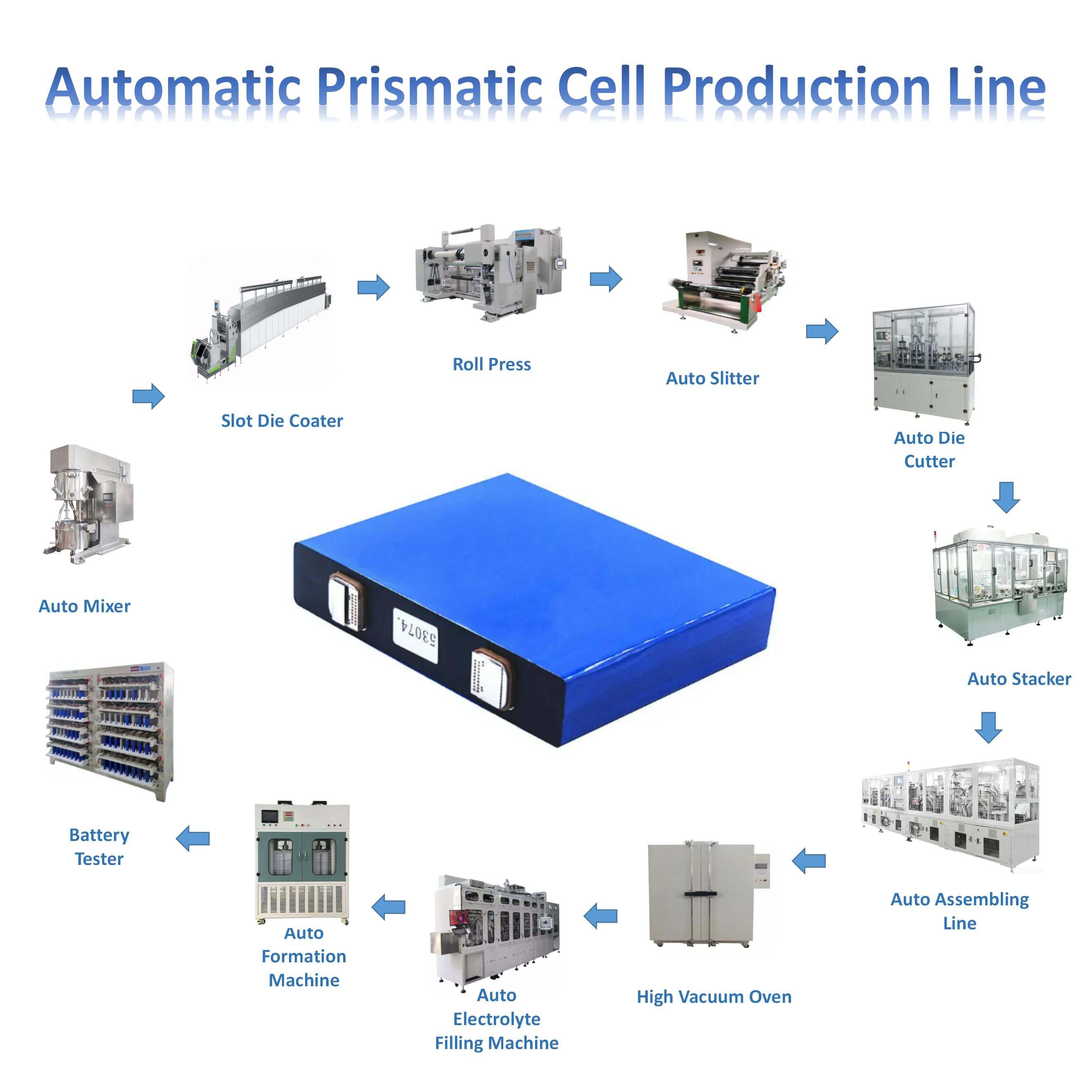

In a prismatic battery pilot lab line, various specialized equipment is used for testing and validating manufacturing processes on a smaller scale. Pilot equipment is crucial for optimizing processes, identifying potential issues, and ensuring the feasibility of large-scale production. Here are some key types of prismatic battery lab line along with their purposes:
Pilot Coating Machine:
Purpose: Applies a uniform layer of electrode slurry onto a smaller current collector.
Details: Allows for testing and optimizing coating parameters on a smaller scale before full production.
Miniature Roll Press Machine:
Purpose: Compacts the coated electrode to the desired thickness on a smaller scale.
Details: Enables experimentation with different compaction settings and their impact on electrode performance.
Lab-scale Slitting Machine:
Purpose: Cuts coated electrode sheets into smaller widths for testing purposes.
Details: Provides flexibility for researchers to test various electrode sizes and configurations.
Small Stacking Machine:
Purpose: Assembles coated electrodes and separators in a layered structure for smaller-sized prismatic cells.
Details: Allows researchers to experiment with different stacking configurations and materials.
Tabletop Winding Machine:
Purpose: Winds electrode layers into a jelly roll configuration on a smaller scale.
Details: Useful for prototyping and testing winding processes before scaling up.
Compact Injection Molding Machine:
Purpose: Encases a wound electrode stack in a prismatic-shaped housing on a smaller scale.
Details: Enables researchers to validate injection molding processes for prismatic cells.
Benchtop Formation Chambers:
Purpose: Subjects small batches of assembled cells to controlled charging and discharging cycles.
Details: Essential for testing and optimizing the formation process in a controlled environment.
Miniature Spot Welding Machine:
Purpose: Welds tabs onto electrodes for small-scale prismatic cell assembly line
Details: Allows researchers to experiment with different welding parameters and assess the impact on cell performance.
Compact Laser Welding System:
Purpose: Welds external leads to the tabs of smaller prismatic cells.
Details: Enables researchers to validate laser welding processes for smaller cell sizes.
Lab-scale Testing Equipment:
Purpose: Conducts various tests on prismatic cells, including voltage testing, capacity testing, and impedance testing.
Details: Provides researchers with critical data to assess the performance and quality of small-scale prismatic cells.
Desktop Packaging Equipment:
Purpose: Packages small batches of prismatic cells into prototype battery packs.
Details: Allows for testing and validation of packaging processes on a smaller scale.
No. 5 Nanshan Road, Huli District, Xiamen City, Fujian Province, China
 Subscribe to us
Subscribe to us ONLINE
ONLINE Louis@lithmachine.com
Louis@lithmachine.com +0086 15959378975
+0086 15959378975